When the announcement was made that Harper Lee’s long-anticipated second novel Go Set a Watchman was being published, the initial reaction was nothing short of gleeful. To Kill a Mockingbird is arguably the most beloved American novel of all time, and is one of the required school reads that nearly everyone enjoys. However, once it came out that the reclusive 89-year-old Lee may not have wanted the book to be published—and was perhaps being taken advantage of—the anticipation soured somewhat. Since Watchman's 2015 publication, the reviews have been mixed, perhaps affected by the taint of controversy.
If you hesitate to have your memory of Mockingbird tarnished by contention, or if you were disappointed in Watchman yourself, we suggest exploring the books like To Kill a Mockingbird that we've listed below.
Sure, Mockingbird is such a beloved book that some may consider comparisons akin to blasphemy. However, these books take on similar territory. Some have memorable child narrators while others feature a coming of age story set in the South. There are tales of racism or injustice, a courtroom drama where justice prevails, and a novel that fictionalizes historical events surrounding the Civil Rights movement. So while nothing can ever replace Lee's beloved novel in our hearts, these books like To Kill a Mockingbird are great ways to pass the time in between rereads.

Mudbound
In Jordan’s prize-winning debut, prejudice takes many forms, both subtle and brutal. It is 1946, and city-bred Laura McAllan is trying to raise her children on her husband’s Mississippi Delta farm-a place she finds foreign and frightening. In the midst of the family’s struggles, two young men return from the war to work the land. Jamie McAllan, Laura’s brother-in-law, is everything her husband is not-charming, handsome, and haunted by his memories of combat. Ronsel Jackson, eldest son of the black sharecroppers who live on the McAllan farm, has come home with the shine of a war hero. But no matter his bravery in defense of his country, he is still considered less than a man in the Jim Crow South. It is the unlikely friendship of these brothers-in-arms that drives this powerful novel to its inexorable conclusion.

The Secret of Magic
In 1946, a young female attorney from New York City attempts the impossible: attaining justice for a black man in the Deep South. Regina Robichard works for Thurgood Marshall, who receives an unusual letter asking the NAACP to investigate the murder of a returning black war hero. It is signed by M. P. Calhoun, the most reclusive author in the country. As a child, Regina was captivated by one of Calhoun’s novels in which white and black children played together in a magical forest. Once down in Mississippi, Regina finds that nothing in the South is as it seems. She must navigate the muddy waters of racism, relationships, and her own tragic past. The Secret of Magic brilliantly explores the power of stories and those who tell them.

The Secret Life of Bees
Set in South Carolina in 1964, The Secret Life of Bees tells the story of Lily Owens, whose life has been shaped around the blurred memory of the afternoon her mother was killed. When Lily’s fierce-hearted black “stand-in mother,” Rosaleen, insults three of the town’s most vicious racists, Lily decides they should both escape to Tiburon, South Carolina—a town that holds the secret to her mother’s past.
There they are taken in by an eccentric trio of black beekeeping sisters who introduce Lily to a mesmerizing world of bees, honey, and the Black Madonna who presides over their household. This is a remarkable story about divine female power and the transforming power of love—a story that women will share and pass on to their daughters for years to come.

Bombingham
From the war-torn rice fields of Vietnam to the riot-filled streets of Birmingham, Alabama, Bombingham is the affecting story of a middle-class black family driven by its personal chaos.

The Bottoms
A thriller with echoes of William Faulkner and Harper Lee, The Bottoms is classic American storytelling in its truest, darkest, and more affecting form. Its 1933 in East Texas and the Depression lingers in the air like a slow moving storm. When a young Harry Collins and his little sister stumble across the body of a black woman who has been savagely mutilated and left to die in the bottoms of the Sabine River, their small town is instantly charged with tension. When a second body turns up, this time of a white woman, there is little Harry can do from stopping his Klan neighbors from lynching an innocent black man. Together with his younger sister, Harry sets out to discover who the real killer is, and to do so they will search for a truth that resides far deeper than any river or skin color.

The Heart is a Lonely Hunter
With the publication of her first novel, The Heart Is a Lonely Hunter, Carson McCullers, all of 23, became a literary sensation. With its profound sense of moral isolation and its compassionate glimpses into its characters’ inner lives, the novel is considered McCullers’ finest work. At its center is the deaf-mute John Singer, who becomes the confidant for various types of misfits in a Georgia mill town during the 1930s. Each one yearns for escape from small town life.
When Singer’s mute companion goes insane, Singer moves into the Kelly house, where Mick Kelly, the book’s heroine (and loosely based on McCullers), finds solace in her music. Wonderfully attuned to the spiritual isolation that underlies the human condition, and with a deft sense for racial tensions in the South, McCullers spins a haunting, unforgettable story that gives voice to the rejected, the forgotten, and the mistreated.
Related: The Complete Oprah's Book Club List

As Hot as It Was You Ought to Thank Me
The novel’s young heroine, Berry, joins the ranks of other memorable and spirited girl narrators such as Bone in Bastard Out of Carolina, Kaye Gibbon’s Ellen Foster, Lily Owens in The Secret Life of Bees, and Scout from To Kill a Mockingbird.

Tell the Wolves I'm Home
There is only one person who has ever truly understood 14-year-old June Elbus, and that’s her uncle, the renowned painter Finn Weiss. Shy at school and distant from her older sister, June can only be herself in Finn’s company; he is her godfather, confidant, and best friend.
So when he dies, far too young, of a mysterious illness her mother can barely speak about, June’s world is turned upside down. But Finn’s death brings a surprise acquaintance into June’s life, someone who will help her to heal, and to question what she thinks she knows about Finn, her family, and even her own heart.

Prince Edward
During the summer of 1959, Virginia’s Prince Edward County is entirely consumed by passionate resistance against, and in other corners, support for, the desegregation of schools as mandated by Brown v. Board of Education.
Evocative and lush with historical detail, Prince Edward is a refreshing bildungsroman by bestselling author Dennis McFarland, and a striking portrait of the social upheaval in the American South on the eve of the civil rights movement.

The Well and the Mine
A novel of warmth and true feeling, The Well and the Mine explores the value of community, charity, family, and hope found amidst hardship. In a small Alabama coal-mining town during the summer of 1931, 9-year-old Tess Moore sits on her back porch and watches a woman toss a baby into her family’s well without a word.
This shocking act of violence sets in motion a chain of events that forces Tess and her older sister Virgie to look beyond their own door and learn the value of kindness and lending a helping hand. As Tess and Virgie try to solve the mystery of the well, an accident puts their 7-year-old brother’s life in danger, forcing the Moore family to come to a new understanding of the power of love and compassion.
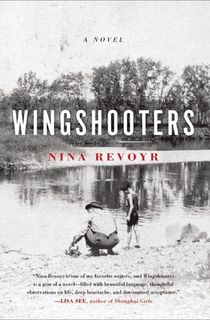
Wingshooters
Michelle LeBeau, the child of a white American father and a Japanese mother, lives with her grandparents in Deerfield, Wisconsin—a small town that had been entirely white before her arrival. Rejected and bullied, Michelle spends her time reading, avoiding fights, and roaming the countryside with her dog Brett. She idolizes her grandfather, Charlie LeBeau, an expert hunter and former minor league baseball player who is one of the town’s most respected men.
This fragile peace is threatened when the expansion of the local clinic leads to the arrival of the Garretts, a young black couple from Chicago. The Garretts’ presence deeply upsets most of the residents of Deerfield—especially when Mr. Garrett makes a controversial accusation against one of the town leaders, who is also Charlie LeBeau’s best friend.

The Mockingbird Next Door
To Kill a Mockingbird by Harper Lee is one of the best loved novels of the twentieth century. But for the last fifty years, the novel’s celebrated author, Harper Lee, has said almost nothing on the record. Journalists have trekked to her hometown of Monroeville, Alabama, where Harper Lee, known by her friends as Nelle, has lived with her sister, Alice, for decades, trying and failing to get an interview with the author.
But in 2001, the Lee sisters opened their door for Chicago Tribune reporter Marja Mills. It was the beginning of a long conversation—and a friendship that has continued until Lee’s death in 2016.
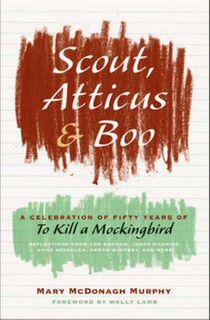
Scout, Atticus, & Boo
To mark the 50th anniversary of To Kill a Mockingbird, Mary McDonagh Murphy reviews its history and examines how the novel has left its mark on a broad range of novelists, historians, journalists, and artists.
In compelling interviews, Oprah Winfrey, James Patterson, Wally Lamb, and many others reflect on when they first read the novel, what it meant to them then, what means to them now, and its lasting personal impact.

Just Mercy
From one of the most brilliant and influential lawyers of our time comes a powerful true story about the potential for mercy to redeem us, and a clarion call to fix our broken system of justice. Bryan Stevenson was a young lawyer when he founded the Equal Justice Initiative, a legal practice dedicated to defending those most desperate and in need: the poor, the wrongly condemned, and women and children trapped in the farthest reaches of our criminal justice system. One of his first cases was that of Walter McMillian, a young man who was sentenced to die for a notorious murder he insisted he didn’t commit. The case drew Bryan into a tangle of conspiracy, political machination, and legal brinksmanship—and transformed his understanding of mercy and justice forever.

Dollbaby
When Ibby Bell’s father dies unexpectedly in the summer of 1964, her mother unceremoniously deposits Ibby with her eccentric grandmother Fannie. Fannie’s New Orleans house is like no place Ibby has ever been—and Fannie, who has a tendency to end up in the local asylum—is like no one she has ever met. Fortunately, Fannie’s Black cook, Queenie, and her smart-mouthed daughter, Dollbaby, take it upon themselves to initiate Ibby into the ways of the South, both its grand traditions and its darkest secrets.
For Fannie’s own family history is fraught with tragedy, hidden behind the closed rooms in her ornate Uptown mansion. It will take Ibby’s arrival to begin to unlock the mysteries there. And it will take Queenie and Dollbaby’s hard-won wisdom to show Ibby that family can sometimes be found in the least expected places.
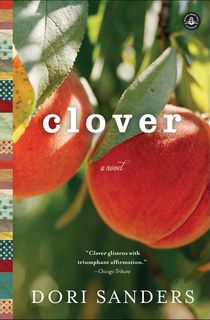
Clover
Clover is a 10-year old black girl from a small town in South Carolina, whose life changes forever when her father dies and she is forced to forge a new relationship with the white stepmother she hardly knows. A beautiful, trenchant story of family lost and found, Clover is a unique and heartfelt reading experience for all ages.

The Sacred Place
In the summer of 1955, 14-year-old Clement enters a general store in Money, Mississippi to purchase a soda. Unaware of the consequences of flouting the rules governing black-white relations in the South, this Chicago native defies tradition, by laying a dime on the counter and turns to depart.
Miss Cuthbert, the store attendant, demands that he place the money in her hand, but he refuses, declaring, “I ain’t no slave!” and exits with a sense of entitlement unknown to black people at the time. His behavior results in his brutal murder. This event sparks a war in Money, forcing the Black community to galvanize its strength in pursuit of equality.
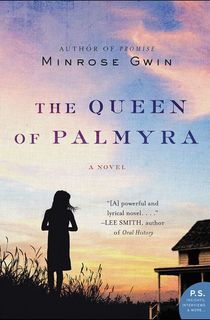
The Queen of Palmyra
In the turbulent southern summer of 1963, Millwood’s white population steers clear of “Shake Rag,” the Black section of town. Young Florence Forrest is one of the few who crosses the line. The daughter of a burial insurance salesman with dark secrets and the town’s “cake lady,” whose backcountry bootleg runs lead further and further away from a brutal marriage, Florence attaches herself to her grandparents’ longtime maid, Zenie Johnson.
The more time Florence spends in Shake Rag, the more she recognizes how completely race divides her town; her story, far from ordinary, bears witness to the truth and brutality of her times.

The Year the Colored Sisters Came to Town
When the Louisiana town of Ville d’Angelle is jolted by the arrival of two Black nuns in 1957 to teach at the all-white Catholic elementary school, for the first time Vivien Leigh Dubois is obliged to consider the color of people’s skin.

Ordinary Grace
Award-winning author William Kent Krueger has gained an immense readership for his Cork O’Connor series. In Ordinary Grace, Krueger looks back to 1961 to tell the story of Frank Drum, a boy on the cusp of manhood. A typical 13-year-old with a strong, loving family, Frank is devastated when a tragedy forces him to face the unthinkable and to take on a maturity beyond his years.
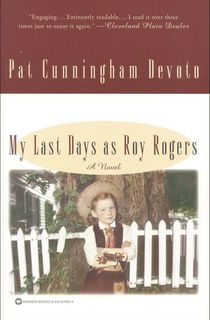
My Last Days as Roy Rogers
In an Alabama town in the early 1950s, during the last polio summer, 10-year-old Tabitha Rutland, a tomboy with a passion for Roy Rogers, seeks adventure with her best friend Maudie May.
As they meddle with the local bootlegger, row out on the Tennessee River to land the biggest catfish ever, and snoop into the town’s darkest secrets, Tab sets out to be a hero—and comes of age in an unforgettable confrontation with human frailty, racial injustice, and the healing power of love.

A Lesson Before Dying
A Lesson Before Dying, is set in a small Cajun community in the late 1940s. Jefferson, a young black man, is an unwitting party to a liquor store shoot out in which three men are killed; the only survivor, he is convicted of murder and sentenced to death.
Grant Wiggins, who left his hometown for the university, has returned to the plantation school to teach. As he struggles with his decision whether to stay or escape to another state, his aunt and Jefferson’s godmother persuade him to visit Jefferson in his cell and impart his learning and his pride to Jefferson before his death.
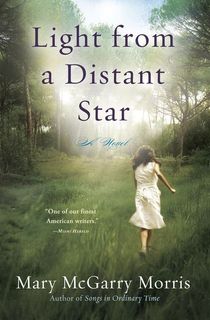
Light from a Distant Star
Light from a Distant Star is a gripping coming-of-age story with a brutal murder at its heart and a heroine as unforgettable as Harper Lee’s “Scout.” It is early summer and Nellie Peck is on the cusp of adolescence—gangly, awkward, full of questions, but keenly observant and wiser than many of the adults in her life.
When violence erupts in the lovely Peck house, the prime suspect seems obvious. Nellie knows who the real murderer is, but is soon silenced by fear and the threat of scandal. The truth, as she sees it, is shocking and unthinkable, and with everyone’s eyes riveted on her in the courtroom, Nellie finds herself seized with doubt. No one will listen. No one believes her, and a man’s life hangs in the balance.

The Little Friend
Although the Cleves generally revelled in every detail of their family history, the events of ‘the terrible Mother’s Day’ were never, ever discussed. On that day, nine-year-old Robin Cleves, loved by all for his whims and peculiarities, was found hanging by the neck from a rope slung over a black-tupelo tree in his own garden. Eleven years later, the mystery—with its taunting traces of foul play—was no nearer a solution than it had been on the day it happened.
This isn’t good enough for Robin’s youngest sister Harriet. Only a baby when the tragedy occurred, but now twelve years old and steeped in the adventurous daring of favorite writers such as Stevenson, Kipling and Conan Doyle, Harriet is ready and eager to find and punish her brother’s killer.

Lay That Trumpet in Our Hands
Inspired by real events, Lay That Trumpet In Our Hands is a wise and luminous story about a northern family, a southern town, and the senseless murder that sparks an extraordinary act of courage.
Good Book Series Like To Kill a Mockingbird for Adults
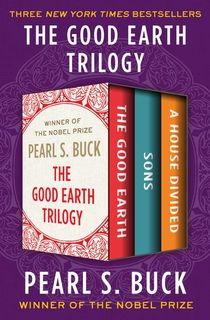
The Good Earth Trilogy
Set in rural China in the 1920s, during the tumultuous period between the fall of the Qing dynasty and the advent of the Communist revolution, The Good Earth is the story of one family’s response to historical forces beyond their control. Like To Kill a Mockingbird, it examines an impossibly complex social phenomenon through the lens of a few individuals caught in the middle of it.
Wang Lung and his wife, O-Lan, claim humble beginnings—a peasant farmer and a former slave, respectively. Through hard work and good fortune, they climb their way up the economic ladder, eventually saving up enough money to buy the very house in which O-Lan once worked.
The hard part, Wang Lung and O-Lan soon learn, was not building their fortune, but maintaining it. As the couple and theirs sons weather jealous neighbors, fickle harvests, and the intensifying rumbles of social upheaval throughout the country, Wang Lung finds his wealth and his integrity increasingly at the mercy of forces larger than himself.

The Immigrants
The Immigrants combines raw interpersonal drama with vivid historical fiction to create an immigrant family saga that, like To Kill a Mockingbird or The Good Earth, artfully situates one family within the broader social and economic forces around them. As these families work to change their circumstances, their circumstances also change them.
Like a phoenix from the literal ashes, immigrant Dan Lavette digs himself out of the devastation of the 1906 San Francisco earthquake to become the head of a massive shipping empire and an influential member of San Francisco’s cultural elite.
Set for a marriage of convenience with the daughter of one of the city’s wealthiest families, Lavette’s American-dream success story is threatened by a scandalous love affair that could undo everything he has worked so hard to create.

Song of the River
In Song of the River, prehistoric fiction writer Sue Harrison examines the small interpersonal dramas that can both precipitate and crystallize large-scale strains on human cooperation, like war.
Set eight hundred years ago in the frozen land that now makes up Alaska, this book follows twenty-year-old Chakliux, storyteller of his tribe. As a baby, Chakliux was left to die in the frozen tundra, rescued and raised by a woman named K’os. Now, Chakliux seeks to return the favor by marrying the storyteller of a neighboring tribe with whom a recent dispute is rapidly spiraling into war.
But when two people in the Near River tribe are murdered upon Chakliux’s arrival, the likelihood of war seems higher than ever—especially when he discovers a secret about K’os that leaves him questioning everything he thought to be true about the two rivals.
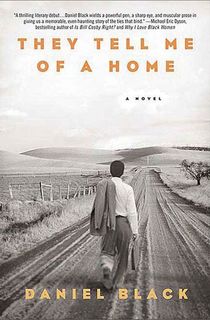
They Tell Me of a Home
Twenty-eight-year-old Tommy lee Tyson swore he would never return to his hometown of Swamp Creek, Arkansas when he left for college ten years ago. Yet a Ph.D. in black studies has brought him back home to understand the black community that produced him.
His parents are as emotionally distant as ever, exhibiting little sympathy even when informing Tommy that his baby sister has passed away, though no one will tell him how. Meanwhile, Tommy’s seventy-old former teacher has one dying wish for him: to replace her in their town’s one-room school house. Tommy is certain that his stay his temporary, and the shadow of his sister’s death does little to convince him.
But over the course of one tumultuous week, Tommy learns truths about his family, his community, and himself that make him question whether his connection to rural Southern black culture can ever truly be severed.
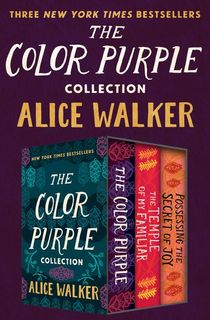
The Color Purple Collection
Life for Celie has always been a battle. Born into poverty in rural Georgia, Celie suffers abuse at the hands of both society and her own family, eventually married off to a man that mistreats her just as severely. Her only confidante in the world, her sister Nettie, has escaped at Celie’s behest, who can’t bear to watch her sister suffer the same fate.
To cope with her immeasurable pain and isolation, Celie begins writing letters to God. As the letters progress, we watch the trajectory of Celie’s life change as, one by one, three women enter it: her husband’s mistress, Shug Avery, a jazz singer; her stepson’s wife, Sofia; and Nettie, whose renewed support proves most powerful of all.
The Color Purple is an empowering testament to women’s ability to change each others’ lives for the better. The novel has won both a Pulitzer Prize and a National Book Award. The award-winning 1985 Stephen Spielberg film adaptation was remade in 2023, produced by Spielberg and Oprah Winfrey and starring Taraji P. Henson, Danielle Brooks, and Fantasia Barrino.
Featured still from "To Kill a Mockingbird" (1962), via Universal Pictures



















